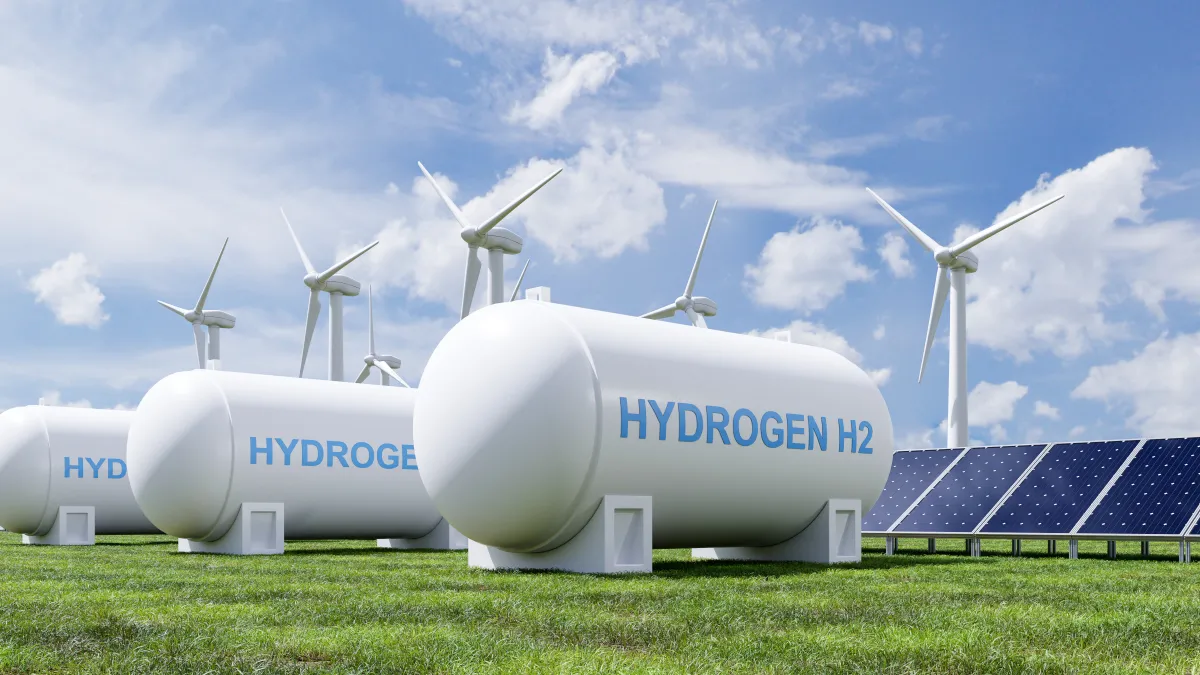The U.S. Department of Energy on Monday announced nearly $42 million for about two dozen projects to produce, store and deploy clean hydrogen.
Clean hydrogen is produced with zero or next-to-zero carbon emissions and can be produced with renewables, nuclear energy and fossil fuels with carbon capture. Federal energy officials say it also can help expand clean electricity by providing a means for long-duration energy storage and offer flexibility and sources of revenue for clean power generation.
An electric current splits water into hydrogen and oxygen, and if the electricity is produced by renewable sources, such as solar or wind, the resulting hydrogen is considered renewable.
“Today’s investments are a bold step in addressing some of our hardest to decarbonize sectors — heavy transportation and industry — by working directly with states and tribes to make hydrogen an available clean energy source,” said Energy Secretary Jennifer Granholm.
The 22 projects in 14 states will develop technologies for solar fuels.
The projects also will demonstrate higher-density and lower-pressure hydrogen storage technologies, reduce the costs of hydrogen fuel cells for medium- and heavy-duty transportation applications and seek to improve hydrogen-emissions detection and monitoring.
Projects selected to improve hydrogen emissions detection will supplement DOE’s work on hydrogen leakage, an issue that that has prompted community concerns about hydrogen emissions and safety.
The projects will advance DOE’s Hydrogen Shot goal of reducing the cost of clean hydrogen to $1/kg within a decade. And they will support DOE’s H2@Scale initiative that aims to expand the affordable production, transport, storage and utilization of clean hydrogen.
“This award will further the development of advanced solar water splitting technology to scale up production of renewable hydrogen fuel,” said Rep. Marcy Kaptur of Ohio, the top Democrat on the House Appropriations Subcommittee on Energy and Water Development.
Bringing these advanced materials to market will foster greater growth of domestic supply chains for next- generation energy production, she said.
DOE on Monday also announced $17.8 million to establish a North American university research consortium to help states and tribal communities implement grid resilience programs and achieve decarbonization goals.
The agency selected Stanford University to establish and lead a regional consortium of universities in the U.S., Canada and Mexico to decarbonize and improve the resiliency of the electric power system. This consortium will help states, tribes and regions develop data, modeling tools, workforce and methods needed to establish programs to improve grid resiliency, establish decarbonization goals and prioritize investments, DOE said.
The work by universities is split into five topics: solar fuels from photoelectrochemical and solar thermochemical water splitting; development and validation of sensor technology for monitoring and measuring hydrogen losses; materials-based hydrogen storage demonstrations, high performing, durable, low-PGM catalysts and membrane electrode assemblies for medium- and heavy-duty applications; and the University Research Consortium for Grid Resilience.















